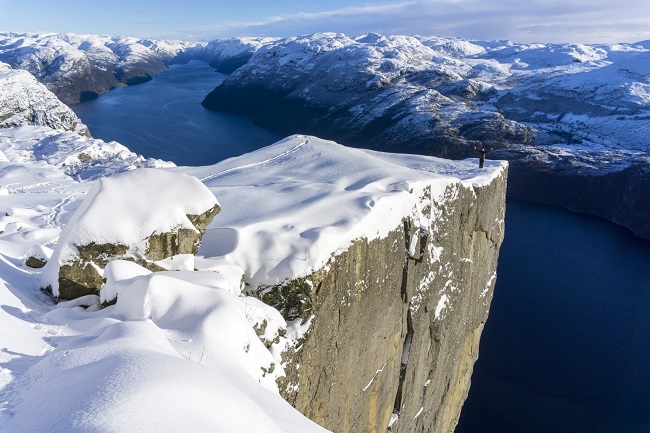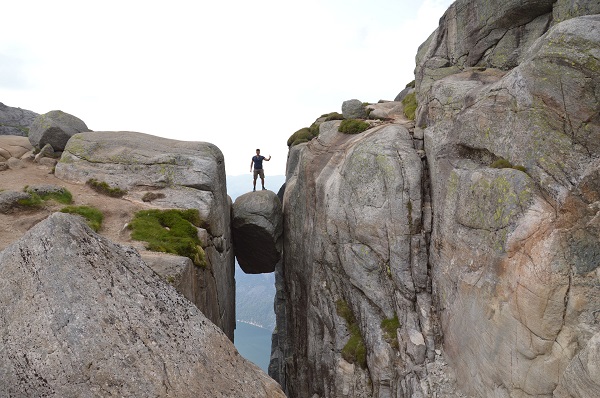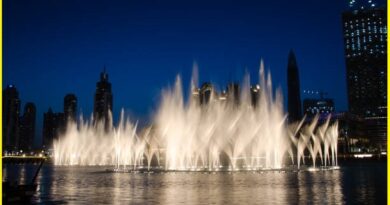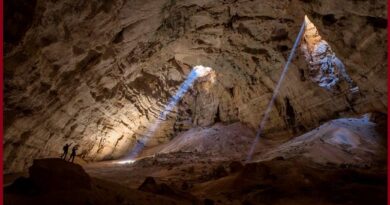The Fjord Valley and ‘Preikestolen Rocky landscape’, Norway: Take a look around the ‘Ice Age’ wonder

Athlete Thomas Peter Randulf first noticed Preikestolen Pulpit Rock. While onboard the ship Oscar II, Randulf spotted the enormous plateau hanging above Lysefjorden. He decided to conquer the massive flat rock above the fjord. Preikestolen became one of Norway’s most well-known tourist attractions.
In 2015, Lonely Planet ranked Preikestolen Rock Mountain as number 1 on their listing of “most breathtaking viewing platforms” in the world. Every year, a number of people from all over the world hikes the 6-kilometer trail up to Preikestolen.
How it formed
Fjord was created by glaciers. Million years ago the area around the Lysefjord was a shallow mountain valley that had been created as rivers and creeks eroded the landscape. During the ice ages, this valley was covered with glaciers.

Toward the end of the last Ice Age 10,000 years ago, as the glaciers carved out, debris was pushed downward and outward along the valley while the sea-level simultaneously began to rise. Over time, the debris accumulated into massive piles and walls, known as moraines.
Also read- The Beautiful landscape ‘Valley of flower’ in Uttarakhand, Himalaya, Take a tour around the lost valley and its snowy mountain.
The seawater eventually broke through the valley’s end moraine and it’s causing it to flood. At this point, the fjord was formed. Though the floor of the Lysefjord is 457 meters below sea-level at its deepest point, the end moraine at the mouth of the fjord resulted in a depth of just 13 meters.

There is much scenic beauty in this terrain. The location Kjeragbolten is a rock formation in which a large rock is stuck in a crack in the mountain. It has the appearance of a bolt, hence its name Kjeragbolten.

The best time to go to Preikestolen is the summer. The hike is also open during the winter months. The hike is very risky you shouldn’t attempt it with Norway’s mountains as the rocks on the trail can be extremely slippery. There are several flights a day from Oslo to Stavanger Airport. From there you can easily reach Lysefjord.



